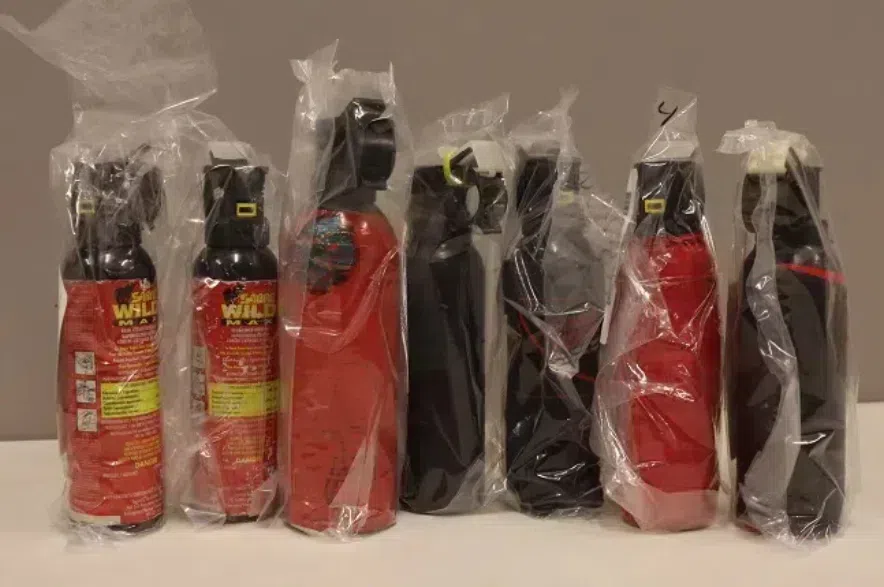There could soon be a host of new rules surrounding the sale of bear spray in Saskatoon.
According to a report that will be presented to city council next week, the proposed changes to Bylaw 9746 come at the request of Cameron McBride, Saskatoon’s police chief.
Read More:
- Bear spray allegedly used on Saskatoon Police officer, woman charged
- ‘It’s crazy’: Saskatoon firefighter says bear spray keeping first responders busy
- Man and woman charged after bear spraying each other at Saskatoon bar: Police
“This product is not designed to be used on humans, and its misuse has risen substantially in Saskatoon and other communities in Canada over the last five years,” McBride wrote in a letter.
The city report stated that the number of reported bear spray incidents in Saskatoon nearly doubled between 2021 and 2024, and crimes committed by youths involving bear spray increased by more than 500 per cent during the same period.
“In 2024, 60% of bear spray related incidents were committed by youth, compared to 24% in 2021,” the report noted.
In his letter, McBride requested a number of changes to the city’s current bylaw.
The changes proposed by the police chief would prohibit the sale of bear spray to any person under the age of 18 or any person who fails to identify themselves as required by the bylaw, and would require employees selling bear spray to be at least 18 years of age.
The changes would also require sellers to obtain and record the name, address, phone number and date of birth of the person purchasing the bear spray, and record the numbers of two pieces of identification, one of which must include a photograph, along with the serial number and a description of the spray being sold, the name of the employee who sold the bear spray and confirmation from the employee that the identification provided matches the purchaser.
Sellers would also be required to retain the records for a period of two years from the date of sale, and provide the records to the city upon request.
The changes would also require that bear spray be stored out of view of customers and be inaccessible to the public, and only products containing manufacturer’s serial numbers and labels may be sold. Containers that have been altered in any way would not be legal to sell under the proposed changes.
Business owners who don’t follow the proposed new bylaws could face steep fines, or the suspension or termination of their business licenses. Fines for individuals could be up to $10,000, with fines of up to $25,000 for corporations.
The city noted that Manitoba has similar rules in place, along with several other cities, including Vancouver and Edmonton.
If councilors approve the proposed changes, final approval of the bylaw would be voted on at the July 30 council meeting.
Saskatoon police and city administration would then contact affected businesses to provide them with additional information.
What is bear spray?
Bear spray is a deterrent containing capsaicin, a chemical found in chili peppers. The canister releases a cone-shaped cloud of spray at a speed of over 100 km/h, approximately 10 m away. Capsaicin inflames the eyes and respiratory system of both animals and humans.
According to bearwise.org, the spray is oil-based, so first aid for the bear spray is to wash off the residue with soap and water, don’t rub your eyes or nose, and rinse your eyes with clean water until the irritation subsides. The effects generally wear off in about 45 minutes, the bear awareness site says.
Last year, the provincial government announced new regulations aiming to reduce the number of criminal incidents involving bear spray.
The changes include regulations to restrict the possession of bear spray in public urban spaces and a ban on altering bear spray to hide or disguise the product’s identity. Anyone charged under the new regulations could face fines of up to $100,000.
According to the provincial government, police in Saskatchewan have responded to over 3,000 bear spray incidents over the last five years, but the total number of incidents involving bear spray could be much higher when factoring in unreported cases.











